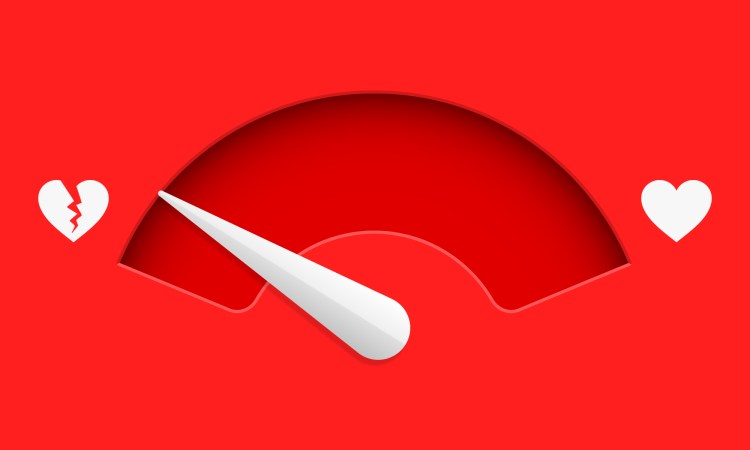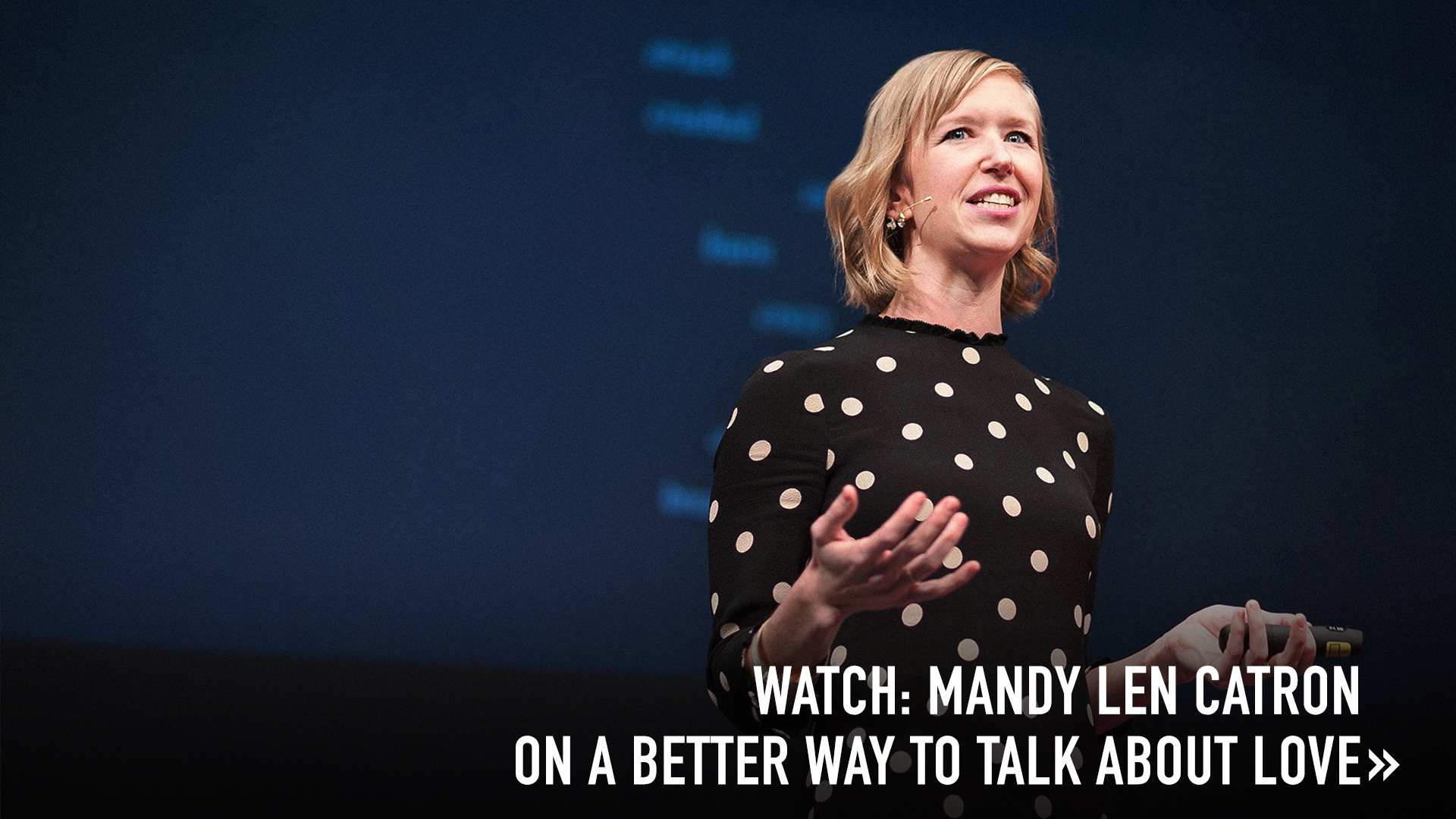
Why does love end — and why does it hurt so darn much? We can take a bit of creature comfort in knowing that other animals seem to suffer, too, says writer Mandy Len Catron.
Physicists and engineers and computer scientists often use the concept of a black box to represent what they don’t know. The box indicates an opaque component within a system — they know what goes in and what comes out, but they can only hypothesize about what happens inside it. The point of the black box isn’t necessarily to figure out what’s inside but rather to find a way to work around the unknown.
Once you start thinking about it, you realize our lives are full of black boxes: closed-door meetings, the Google search algorithm, the mechanics of desire. And I think of my parents’ marriage — or the last few years of it — as a black box. It seemed we were all happy enough when I moved away from home. But something changed. I tried but I couldn’t figure out what it was. I couldn’t see inside the box.
We don’t seem to mind a little mystery in the process of falling in love, but when love ends, we demand an explanation, a why.
For their part, my parents offered no explanation other than to say they didn’t love each other the way they once did. They assured us that they had tried but could see no resolution. There were no infidelities, no obvious betrayals, no secret addictions. Their separation — and eventual divorce — seemed so painful for each of them to discuss that I quickly gave up asking.
While we don’t seem to mind a little mystery in the process of falling in love, endings are different. When love ends, we demand an explanation, a why. Just as, when someone gets lung cancer, we prefer to be able to say, “Well, he did work in an asbestos factory.” However, maybe some black boxes — especially those concerning love or death — are just too big. You can’t solve the problem or make sense of the larger system because there’s just too much unknowable information.
There are 155 species of voles, and yet one particular species — the prairie vole — manages to fall and stay in love.
Although we don’t fully understand the mechanics of heartbreak, science is getting closer to making sense of this particular human experience by looking at other species, particularly a small rodent known as the prairie vole. Prairie voles are one of the 3 percent of mammals that practice monogamy. They mate for life and are doting, enthusiastic co-parents. There are 155 species of voles, and yet this particular species manages to fall — and stay — in love.
Maybe you are thinking voles can’t fall in love, but biologically speaking (and, really, according to most definitions), love is the best word for their experience. Part of their scientific significance lies with contrasting their behavior to their close cousins, the meadow voles, who are fairly solitary and promiscuous. Focusing on the two species, scientists have been able to explore the biological distinctions that enable (or inhibit) mammalian attachment.
Prairie voles will meet a potential partner, pursue a vigorous courtship, and make a life together. Once bonded, the males aggressively ward off other suitors and protect the nest. Parents cuddle and nurture their offspring. Like humans, prairie voles have the occasional extracurricular tryst — they are socially, not sexually, monogamous — but they typically return to their mates. Admittedly, voles only live a year or two, so lifelong vole devotion isn’t quite as challenging or impressive as it is in humans. But even this level of commitment is unusual and, from a biological perspective, significant.
A researcher put bonded voles through stress tests after separating them from their mates and found they consistently exhibited signs of depression.
When it comes to love, the primary biological distinction between the prairie vole and the meadow vole is the density of receptors for the neurotransmitters oxytocin and vasopressin in the reward system of their brains, according to Emory University psychiatrist Larry Young (TEDxEmory Talk: The chemistry between us). Young has studied prairie voles for roughly two decades. While all voles receive a dopamine boost after mating, prairie voles remember their mate — thanks to oxytocin and vasopressin — and associate that mate with pleasure. In a very real way, these small rodents appear to become “addicted” to each other. Young and other researchers who study pair-bonding behavior think it’s the structure of their brains — and not just the chemicals flowing through it — that predisposes some mammals for long-term pair bonding.
For humans, we know that severing romantic attachments is painful, and doing so is inevitably ugly and complicated. In the book The Chemistry Between Us: Love, Sex, and the Science of Attraction, Young and Brian Alexander describe the work of neurobiologist Oliver Bosch, who has experimented with prairie vole separation. Bosch put bonded voles through stress tests after separating them from their mates and found they consistently exhibited signs of depression.
The most memorable example is the “forced swim” test. Voles who were separated from their brothers (the control group) paddled manically when dropped into water, which is typical rodent behavior: when they’re thrown into water, their survival instinct kicks in immediately. But the voles who’d been separated from their female mates didn’t do anything. They, reported Young and Alexander, “floated listlessly as if they didn’t care whether they drowned.” What a sad finding, but knowing the pain of heartbreak isn’t ours to bear alone is a small kind of solace.
Excerpted from the new book How to Fall in Love with Anyone: A Memoir in Essays by Mandy Len Catron. Copyright © 2017 by Mandy Len Catron. Used with permission of Simon & Schuster, New York. All rights reserved.








